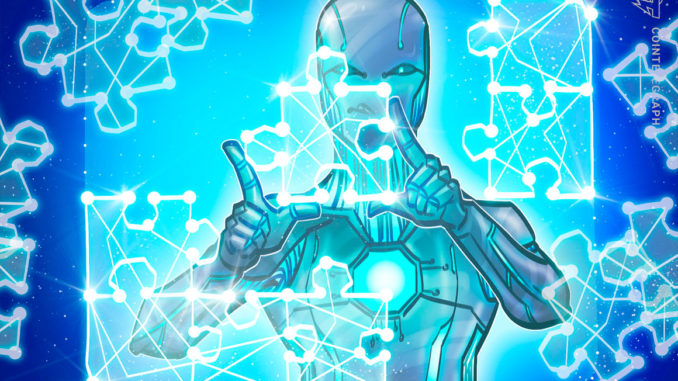
The metaverse space is moving rapidly in terms of hype and the volume of new projects being launched — so much so that the industry market size is projected to grow from $100.27 billion in 2022 to $1,527.55 billion by 2029. But how many of these new projects are even remotely capable of realizing the actual vision set out?
We’re a long way from seeing a true metaverse
Many of the metaverse projects that have been launched are in the world of gaming. However, more often than not, these projects simply consist of standard gaming features combined with virtual reality and NFTs. A true metaverse, in the sense of a digital parallel universe to our analog world, a digital simulated reality in which participants can take part in diverse social, economic, entertainment and artistic activities in a variety of self-organized groupings and environments, has yet to be realized.
Realizing this full vision requires easy portability of users, numerous wildly diverse metaverse shards, and simple user construction of new places and spaces — a vision that we are still developing the technology for.
Related: Here’s how the Metaverse enables inclusivity for genderqueer people
One underappreciated fact about the Metaverse is that it fundamentally needs artificial intelligence woven in at its core in order to provide a lasting user value proposition. Mark Zuckerberg clearly realizes this, but the majority of crypto-world entrants into the space are far less AI-oriented. But how exactly will AI improve the Metaverse?
Solving the “underpopulated metaverse” problem
Competition between developers will land early adopters in thinly populated worlds — an issue that AI can remedy.
The Metaverse presents a huge opportunity for new and existing tech companies to expand their offerings, generating new revenue streams. There are over 160 companies currently working on their own worlds — each competing to be the leading metaverse provider. It’s unlikely that we’ll have “one provider to rule them all,” but will instead have a large variety of options available to us, each with its own unique offerings.

The advantage of this is a more diverse environment for end users, who will be able to choose from a variety of experiences. The downside is that, with so many platforms vying for customer attention and offering so many different experiences, the various metaverses will be sparsely populated in their early days. As interacting with a metaverse is an inherently social experience, this presents a huge problem.
AI-driven non-player characters can help tremendously with the underpopulated metaverse problem. Being one of the first few users in a new world may feel briefly exciting — but if there’s nobody there to interact with and nobody doing interesting things, it will get old fast. A society of AI characters building, conversing, playing music, making art and buying and selling can turn a metaversal ghost town into a scintillating hotbed of digital activity.
The result of this will be countless lively worlds, which will inspire more people to join the Metaverse — eventually reaching a point where non-player characters (NPCs) will be a bonus, rather than a necessity.
Related: Web3 is crucial for data sovereignty in the metaverse
Guiding users through the Metaverse
With a number of tech companies working on their own metaverses, users will not only require the ability to choose the one they want to interact with, but also the ability to seamlessly move between each individual metaverse. This is where blockchain will be an essential tool. Blockchain allows easy portability of property between all of the small, manageable chunks of data that make up a blockchain network — shards. This feature of the technology will allow users to move between each unique metaverse with ease. However, moving between worlds presents another issue: Users will require an introduction to each new world they enter.
It is projected that, by 2026, 25% of people will be using the Metaverse daily. From users dipping their toes in for the first time who need a thorough introduction, to the tech savvy hopping between worlds, everyone will need to be guided through each new metaverse that they spend time in.
Related: In the Economy 3.0, metaverses will create jobs for millions
With such a huge number of people crossing into different worlds, it will be impossible for humans to manage the number of introductions necessary. The most effective way to introduce users to each metaverse will be through the use of an AI guide. Guides will be able to explain all the required information of an individual world to the user, ensuring the best user experience.
Building a truly digital world
Perhaps the most profound benefit that AI will bring to the Metaverse lies in the area of world-building. AI providers will be able to use transformer neural nets (the processing power behind AI), neural-symbolic AI (AI technology with advanced learning capabilities) and related technology to generate bespoke scenarios for each user. This would work by letting the user describe a few details about a desired scenario and then letting the AI generate the complete description of said scenario.
Providers can then use another neural network that takes an inputted verbal description and brings it to life using virtual reality technology. By then putting these two neural models together, we get a system that takes a partial suggestion from a user about a potential scenario and automatically spins up a complete VR experience, incorporating the user’s suggestion and expanding on it.
This would be fine-tuned over time as more scenarios are generated. Once there’s a large enough community of users leveraging these features to create unique content, AI can then be used to data-mine through it all — looking for common patterns and then using these to generate additional material and bias its style of user-guided content creation.
Realistic and unrealistic scenarios could then be extrapolated from the mass-mind of humanity and directed using an interactive storytelling interface, letting each user pick the unique scenario they’d like to experience. AI would ultimately be used to create immersive content within the Metaverse.
All these use cases demonstrate an acute need for AI services that work together with VR and blockchain technology. As the Metaverse grows in popularity, we will see funding pour in — helping with the creation of the required technology. As AI technologies are appropriately deployed, they will unlock the true potential of the Metaverse and we will see the development of exciting digital landscapes that run alongside our analog world.
This article does not contain investment advice or recommendations. Every investment and trading move involves risk, and readers should conduct their own research when making a decision.
The views, thoughts and opinions expressed here are the author’s alone and do not necessarily reflect or represent the views and opinions of Cointelegraph.
Ben Goertzel is a leading innovator within the artificial intelligence space, acting as the chairman of the Artificial General Intelligence Society. He has worked as a research scientist at a number of organizations, most notably as the chief scientist at Hanson Robotics, where he co-developed Sophia alongside David Hanson. During his time at Hanson Robotics, he founded SingularityNET and began building a network of AI tools with unique use cases.




 Bitcoin
Bitcoin  Ethereum
Ethereum  Tether
Tether  XRP
XRP  USDC
USDC  Lido Staked Ether
Lido Staked Ether  TRON
TRON  Dogecoin
Dogecoin  Cardano
Cardano
Be the first to comment